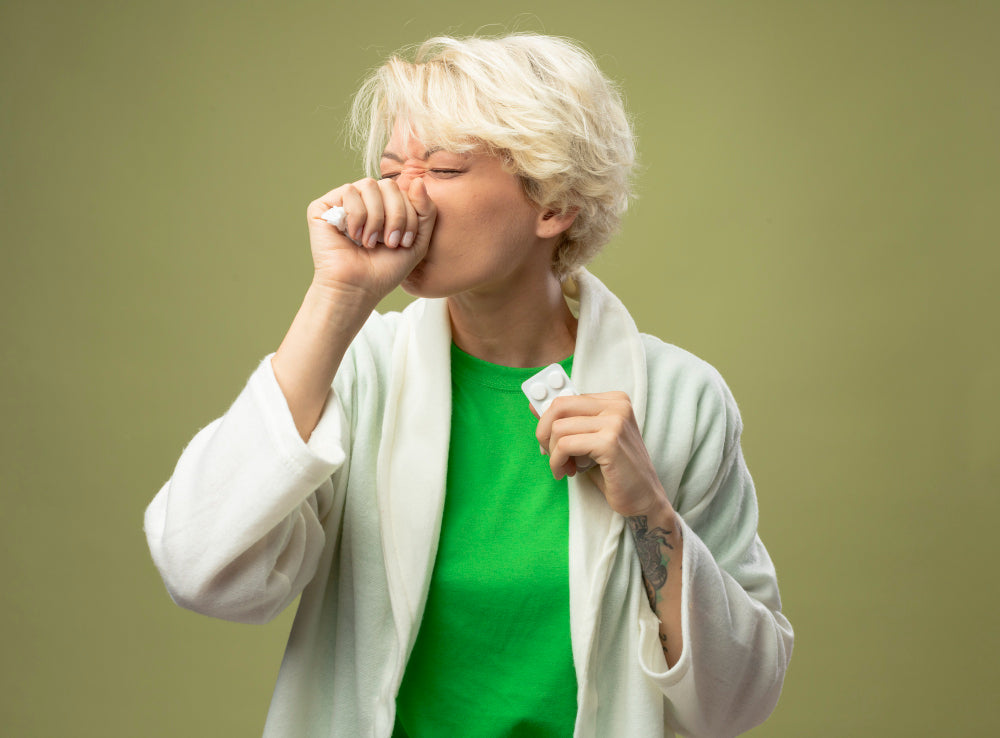You know how it goes - the sun is shining, flowers blooming, the beach is calling and the kids are playing outside way into the evening. It’s idyllic Aussie summer, the thrum of cicada buzzing as the last round of backyard cricket is played into the fading light. But what’s that other sound? A sneeze? A sniffle? And now a cough… and is that a wheeze? Ah, the dulcet tones of the summer symptoms - particularly prevalent in our kids. But is it hay fever or could it be asthma? It can be difficult to tell these symptoms apart, and hard to know when a simple Claratyne might fix the issue, or when it might be more serious. Knowing which are the common symptoms and which are the differentiators can help you determine the best course of action for treatment.
Asthma and hay fever can have some similar symptoms, such as:
- Shortness of breath
- Coughing
- Wheezing
- Chest tightness
- Trouble sleeping due to respiratory symptoms
If you or your children are experiencing any of these - particularly after a stint in the outdoors - it might be hard to tell the difference between hay fever and asthma - particularly if there is no history of asthma.
However, there are also some key differences between the two conditions. Hay fever, also known as allergic rhinitis, is an allergic reaction to airborne substances such as pollens, dust, or mould. It primarily affects the nose and eyes, causing specific symptoms such as:
- Itchy, or watery eyes
- Itchy, runny or blocked nose
- Sneezing
- Needing to clear your throat frequently
- Snoring
- Breathing more through your mouth
- Feeling like you often have a head cold
Sound miserable? From all reports, it is! Because hay fever is an allergic reaction, the body’s response to allergens means it can overreact and begin to produce a chemical known as “histamine” which binds to receptors on cells in the nose, eyes and lungs - causing the sneezing, itching and cough symptoms we can associate with those balmy summer nights. Hay fever can be treated by blocking the histamine with a medication such as Claratyne, which relieves these symptoms and is effective against many of the known allergens. What you might not already know is that there are over two hundred airborne allergens that can cause hay fever! The origin of airborne allergens are light so they can travel through the air and stick to clothing, hair and the body. One kind of allergen - ragweed pollen - has been discovered as far as 650 kilometres out to sea and three kilometres up in the atmosphere. Another study showed the most common cat allergen was detected in 100 percent of aeroplane seats tested. So even if you can’t pinpoint contact with an allergen, it doesn’t immediately rule out hay fever and inhibiting the histamines with Claratyne may just give you the relief you need. Paying attention to the hay fever specific symptoms can help determine how to treat the symptoms - but if in doubt, do see a pharmacist or GP.
However, Claratyne will not help with asthma as it is not effective at relieving the airway inflammation and narrowing that occurs in asthma. If you are experiencing the symptoms that hay fever and asthma share, how can you identify what might be an asthmatic reaction rather than histamine?
One key difference between asthma and hay fever is that asthma is a chronic condition that requires ongoing management, while hay fever is often a temporary condition that only occurs when a person is exposed to allergens. Another difference is that asthma typically affects the airways in the lungs, while hay fever affects the nose and sinuses. Unlike a response to the production of histamine the narrowing of the airways it becomes difficult for air to flow in and out of the lungs, causing symptoms such as shortness of breath, wheezing, and coughing.
- Asthma symptoms are often worse in the morning, at bedtime or after exercise.
- Like hay fever, the symptoms can also appear when you or your child comes in contact with specific allergens, but they aren’t always linked with pollen.
- Importantly, because asthma is a chronic respiratory disease that causes the airways in the lungs to become inflamed and narrowed, the symptoms won’t be seasonal like hay fever, but will endure through different circumstances.
Ultimately if you have no history of asthma, it will require a diagnosis from a GP and won’t be impacted by the use of Claratyne or other histamine inhibitors. Asthma requires long-term management with medications that can control inflammation and open the airways. Inhaled corticosteroids are the most commonly used medications for the long-term management of asthma. Other medications that may be used to treat asthma include bronchodilators, which help to open the airways, and leukotriene receptor antagonists, which can help to prevent asthma symptoms.
It’s important to note that it is possible for a person to have both asthma and hay fever, and in these cases, the conditions may exacerbate each other. For example, exposure to allergens such as pollen may trigger hay fever symptoms, which can then worsen asthma symptoms. In these cases, it is important for the person to manage both conditions effectively in order to prevent symptoms from becoming severe. In this case, Claratyne could help to reduce the symptoms of hay fever, but the asthma will still require its own treatment plan.
If you or your children are experiencing symptoms such as difficulty breathing, coughing, or wheezing, it is important to speak with a healthcare provider for proper evaluation and treatment. Breathing is too important to be taken lightly! To determine the correct diagnosis, a healthcare provider will typically ask about a person's symptoms, medical history, and any exposures or triggers that may be contributing to the symptoms and may also perform tests such as lung function tests or skin prick tests to identify the cause of the symptoms.
Asthma and hay fever are both common conditions that can affect people of all ages and are easily treatable with the correct diagnosis and plan. Everyone wants to be able to enjoy the great outdoors, so knowing what you or your child is experiencing is key to a happy, healthy, sniffle-free summer.



















































